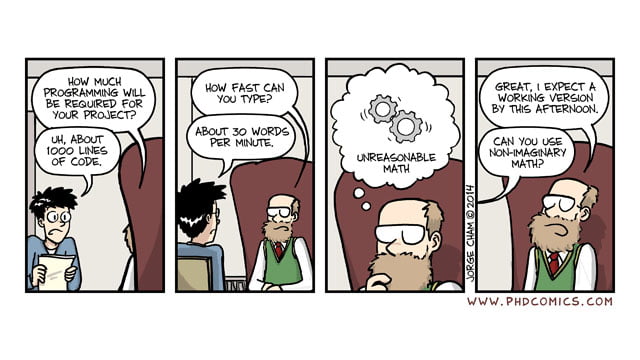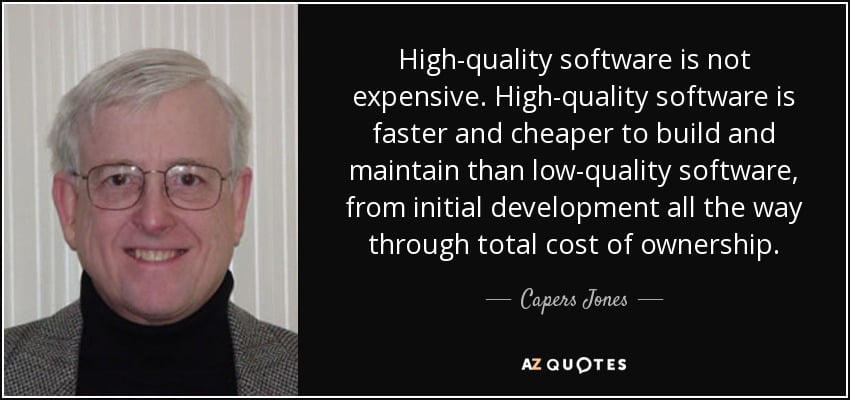Software Development Estimation
in Software Costing we looked at some typical ways of determining the likely cost of a Software Development project. One way was to look at how much typing was involved. This is not considered the best approach as the cartoon below demonstrated.
I prefer to spend more time thinking about the problem and less time typing. Among other things this reduces the amount of typing required.
The other example was by looking at the study by VDC Research where the median Software Development project had a cost of US$12.50 per line of code. Which is also very expensive by our reckoning. But these are actual figures. The hard part is working out how many lines of code (LOC) will be required before you have written them.
Estimation by Function Points
So I was interested when The Embedded Muse, a software development newsletter authored by Jack Ganssle, published some data from Capers Jones who is a legend in the Software Development industry for his statistics on the Software Development Process.
My first thought was that I fully agree with the quote. Let’s have a look at it in detail.
High-quality software is not expensive. High-quality software is faster and cheaper to build and maintain than low-quality software, from initial development all the way through total cost of ownership.
The assertion is that if you have a way to measure Software Quality, and you stick to good Software Development Process and the creation of High Quality Software, the overall cost will be lower. This might seems counter intuitive to some of our prospects given the development process requests we get, but I think it is spot on. Here are the other items of interest.
According to Capers Jones, a very rough guide to estimating the number of people needed on a project, and the project’s duration, is:
- Number of developers = (function points)/150
- Calendar months = (function points) x 0.4
- One function point is approximately 130 lines of C Code
So for a typical 20,000 lines of C Code project, we would expect 154 function points with 1 developer required and it would take 5 years. If I look at one of the Industrial Control projects we did then that was 60,000 lines with 3 developers (that part works) and 8 months overall (rather than 5 years). So I’m not convinced the time component of the formula works. Maybe it is too heavily influenced by larger projects. But the number of developers seems to be about right.
Again, these are actual project figures and not some abstract model. And if you don’t use good Software Development Process then the cost of debugging and fixing issues in the field will typically dwarf the cost of writing the code.
Software Development Metrics
So I thought I’d do a summary of the Software Development Metrics we have accumulated over time as this may help with the Software Estimation process. This is what it looks like in our world of typically smaller projects (less than 100K LOC) reflected through the data above:
- Number of developers = LOC / 20,000
- Number of months = LOC / ((number of developers) x 6600)
- Cost of development = $4.80 per LOC
This assumes good process and average project difficulty. Things that will push a project way past this are code space constraints, processing power constraints, poorly defined requirements and substantial changes of direction mid project. But it does give some way to at least know the ballpark.
Successful Endeavours specialise in Electronics Design and Embedded Software Development, focusing on products that are intended to be Made In Australia. Ray Keefe has developed market leading electronics products in Australia for more than 30 years. This post is Copyright © 2018 Successful Endeavours Pty Ltd.





